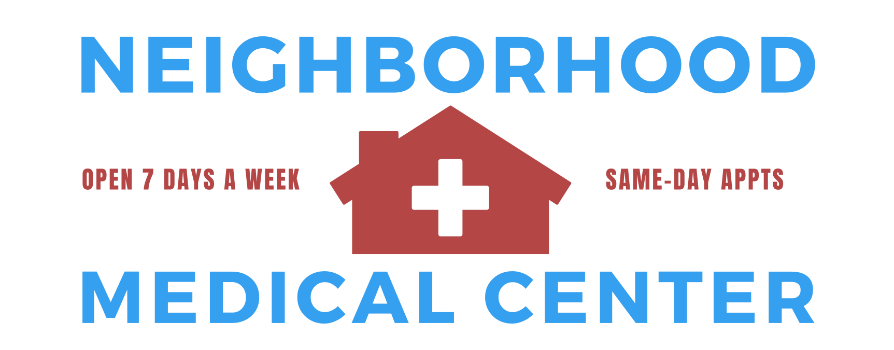Did you know that over 80 million men and women experience hair loss in the United States? This staggering statistic impacts self-esteem and confidence for many, leading to a desperate search for solutions. At Neighborhood Medical Center, Dr. McElya offers PRP (Platelet Rich Plasma) hair restoration—an innovative, natural treatment that uses your own blood to stimulate hair growth. In this comprehensive guide, we explore how PRP therapy works, its benefits, and why it may be the ideal solution for your hair loss concerns.
Understanding Hair Loss
Hair loss is a common issue that affects individuals across different ages and backgrounds. Whether it's due to genetics, hormonal changes, medical conditions, or lifestyle factors, the emotional toll it takes can be significant. Understanding the root causes of hair loss is crucial in identifying appropriate treatment options.
What Is PRP Hair Restoration?
PRP hair restoration involves collecting a small amount of your blood and processing it to extract the platelet-rich plasma. This plasma contains growth factors that play a pivotal role in healing and regeneration. When injected into the scalp, PRP encourages hair follicles to reactivate, promoting hair regrowth and improving hair thickness.
How Does PRP Work?
The procedure begins with a consultation with Dr. McElya to assess hair loss conditions, followed by blood draw similar to routine tests. The drawn blood is placed in a centrifuge, which spins at high speeds to separate different components. The platelet-rich plasma is then collected for injection. The process typically takes about 30 minutes, making it a convenient option for those with a busy schedule.
The Benefits of PRP Therapy
- Non-Surgical: Unlike hair transplant surgery, PRP therapy is non-invasive, reducing the risks and downtime associated with surgery.
- Natural Results: Since PRP uses your own cells, the risk of allergic reactions or complications is minimal.
- Quick Recovery: Patients can return to their daily activities shortly after the treatment, as there’s no extensive recovery period.
- Suitable for All: PRP therapy can effectively help both men and women suffering from thinning hair or loss.
Effectiveness of PRP for Hair Loss
Numerous studies have shown promising results for PRP therapy. Most patients observe an increase in hair density and coverage within 6 to 12 months of treatment. Although results can vary based on individual factors, including the type of hair loss, genetics, and overall treatment adherence, many individuals report satisfaction with their outcomes.
Treatment Plan and Frequency
To achieve optimal results, Dr. McElya believes a personalized treatment plan is essential.
Comparing PRP with Other Treatments
At Neighborhood Medical Center, we understand that there are several treatments available for hair loss, including medications like Minoxidil and Finasteride, as well as surgical options. PRP therapy stands out by using the body’s own healing properties to stimulate hair growth—minimizing the side effects often associated with medications. Unlike surgery, it’s non-invasive, making it a safe and appealing option for many seeking natural, effective hair restoration.
Who Is a Good Candidate for PRP?
PRP therapy may be appropriate for individuals dealing with:
- Male and female pattern baldness
- Hair thinning due to stress or medical conditions
- Alopecia areata or other autoimmune disorders affecting hair loss
Consultation with a professional can help determine candidacy based on individual needs and conditions.
What to Expect During Your PRP Consultation
When considering PRP therapy, your initial consultation with Dr. McElya may cover several aspects:
- Assessment of hair loss condition
- Discussion of treatment expectations and potential outcomes
- Review of medical history to tailor your personal treatment plan
This collaborative approach ensures that the treatment aligns with your goals and health status.
The PRP Treatment Process
1. Blood Draw: A small sample of blood is collected from the arm.
2. Separation: The blood is processed to extract PRP.
3. Injection: The PRP is injected into predetermined areas of the scalp using a fine needle.
4. Post-Care: After treatment, you may experience mild discomfort; however, any discomfort typically resolves quickly.
Aftercare and Recovery
After the PRP procedure, some instructions may include:
- Avoid washing hair for at least 48 hours
- Abstain from chemical treatments for at least two weeks
- Keep an eye on injected areas for any adverse reactions
These simple care measures maximize the chances for successful hair regrowth while maintaining comfort during recovery.
Addressing Common Concerns
1. Is PRP therapy safe?
Yes, PRP therapy is considered safe and effective, utilizing your own body’s resources for rejuvenation, significantly reducing side effects.
2. Are the results permanent?
While many see long-lasting improvements, ongoing maintenance treatments may be necessary, particularly as natural aging occurs.
3. Does it hurt?
The injection process can cause mild discomfort, but topical anesthetics are often applied beforehand to ensure comfort during the procedure.
Conclusion: Where Do We Go From Here?
If you’re struggling with hair thinning or loss, PRP therapy may be the transformative solution you’re seeking. By rejuvenating your hair follicles naturally, PRP restores not only hair growth but also confidence and self-esteem. As with any medical procedure, it's essential to have a thorough consultation with a trusted professional, such as Dr. McElya, to understand your options and establish a personalized treatment plan. Contact Neighborhood Medical Center today and take the first step toward achieving thicker, healthier hair!

